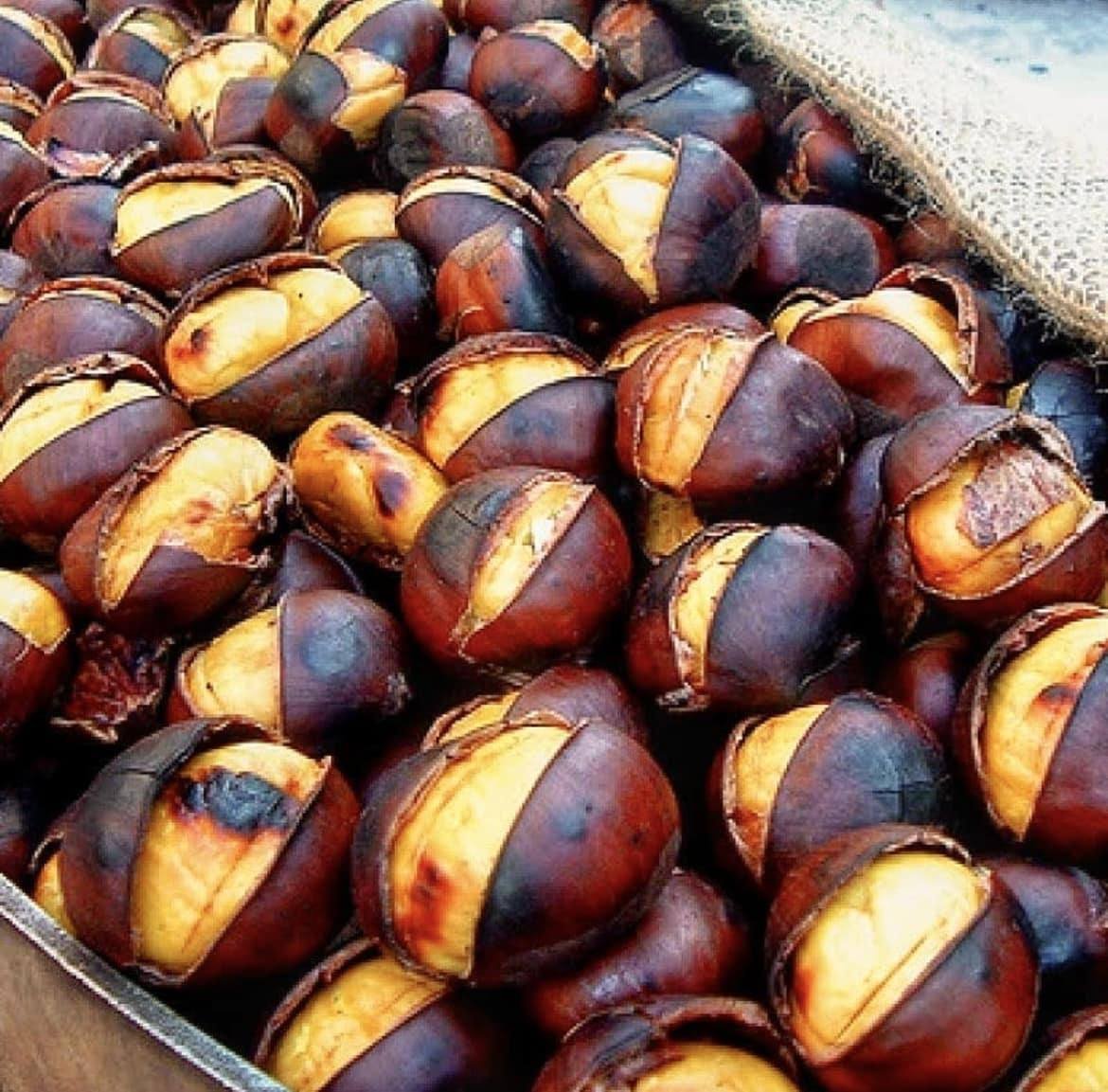Few foods evoke the warmth and nostalgia of autumn in Italy like castagne, or chestnuts. Known for their earthy sweetness and velvety texture, chestnuts have nourished mountain communities for centuries and continue to play a starring role in seasonal cuisine. From humble snacks roasted over glowing coals to hearty soups and desserts, castagne are versatile and comforting. Among the many traditional preparations, the most iconic is caldarroste—roasted chestnuts, often sold on street corners in paper cones during the crisp fall and winter months. The scent of chestnuts roasting is synonymous with seasonal festivities, from village fairs to Christmas markets.
This recipe will guide you through preparing castagne in the classic Italian way—roasting them to perfection, peeling them easily, and enjoying their naturally sweet flavor. We will also explore a simple variation: boiling chestnuts for use in soups, stews, or as a soft side dish.
Ingredients
-
Chestnuts (castagne) – 1 pound (about 500 g)
-
Water – for soaking or boiling
-
Salt (optional) – 1 teaspoon (for boiling version)
Choosing and Preparing Chestnuts
The quality of your caldarroste depends largely on the chestnuts themselves. Select large, firm, and glossy nuts with no holes, cracks, or mold. Fresh chestnuts should feel heavy for their size, which indicates good moisture content. Since chestnuts are encased in a thick outer shell and inner papery skin (pellicle), proper preparation is key to successful cooking.
-
Scoring – Before roasting or boiling, chestnuts must be scored. Using a sharp knife, make an X-shaped cut on the rounded side of each chestnut. This prevents them from bursting during cooking and makes peeling easier.
-
Soaking (optional for roasting) – Some cooks soak the scored chestnuts in water for 30–60 minutes before roasting. This helps soften the shell and makes peeling easier, while also preventing the nuts from drying out.
Method 1: Caldarroste (Roasted Chestnuts)
Roasting brings out the sweet, nutty, slightly smoky flavor that makes caldarroste irresistible. Traditionally, they are cooked in a perforated pan over hot coals, but a modern oven or stovetop grill works just as well.
Instructions
-
Preheat your oven to 425°F (220°C).
-
Arrange the scored chestnuts in a single layer on a baking tray, cut side up.
-
Roast for 20–25 minutes, shaking the tray halfway through to ensure even cooking. The shells should curl back at the scored cuts and the chestnuts inside should be tender.
-
Remove from the oven and cover the chestnuts with a clean kitchen towel for 5–10 minutes. The trapped steam helps loosen the skins.
-
Peel while still warm, removing both the outer shell and inner papery skin. Serve immediately.
Serving Suggestions
Caldarroste are best eaten warm, plain, and straight from the peel. In Italy, they are often enjoyed with a glass of newly pressed wine (vino novello) or sweet dessert wine like Vin Santo. Street vendors traditionally serve them in paper cones, perfect for holding in cold hands on chilly evenings.
Method 2: Castagne Bollite (Boiled Chestnuts)
Boiling is a gentler method that leaves chestnuts moist and tender, ideal for purees, soups, or stuffing.
Instructions
-
Place scored chestnuts in a large pot of cold water. Add a teaspoon of salt if desired.
-
Bring to a boil, then reduce to a simmer. Cook for 30–40 minutes, depending on the size of the nuts.
-
Drain and let cool slightly. Peel while still warm, removing both the shell and inner skin.
Boiled chestnuts can be mashed with butter for a rustic side dish, added to stews for texture, or blended into sweet preparations like chestnut cream.
Tips for Success
-
Peel while warm: Chestnuts become harder to peel as they cool, so work in small batches.
-
Avoid bitterness: If the inner pellicle sticks stubbornly, soak the nuts briefly in hot water after roasting to loosen the skin.
-
Storage: Fresh chestnuts spoil quickly. Keep them in the refrigerator for up to a week, or freeze peeled chestnuts for later use.
Cultural Significance
Chestnuts have long been known as the “bread of the poor” in Italy, especially in mountainous regions where wheat was scarce. Ground into flour, they were used to make polenta, breads, and cakes. Today, while no longer a dietary staple, castagne hold strong cultural value. Towns across Italy celebrate the harvest with sagre delle castagne (chestnut festivals), where caldarroste are enjoyed alongside chestnut-based delicacies like castagnaccio (a rustic chestnut cake) and marrons glacés (candied chestnuts).
The tradition of roasting chestnuts outdoors has also become a social ritual. The sound of crackling shells, the aroma of roasting, and the joy of sharing warm chestnuts evoke a sense of togetherness and comfort.
Conclusion
Whether roasted until smoky and sweet or boiled until tender and creamy, castagne and caldarroste embody the heart of Italian autumn and winter traditions. They are simple yet deeply satisfying, connecting modern tables to centuries of heritage. Next time the weather turns crisp, gather a basket of fresh chestnuts, score them carefully, and let their irresistible aroma fill your kitchen. A handful of warm caldarroste, enjoyed with friends and family, is more than a snack—it’s a timeless celebration of season, flavor, and tradition.
